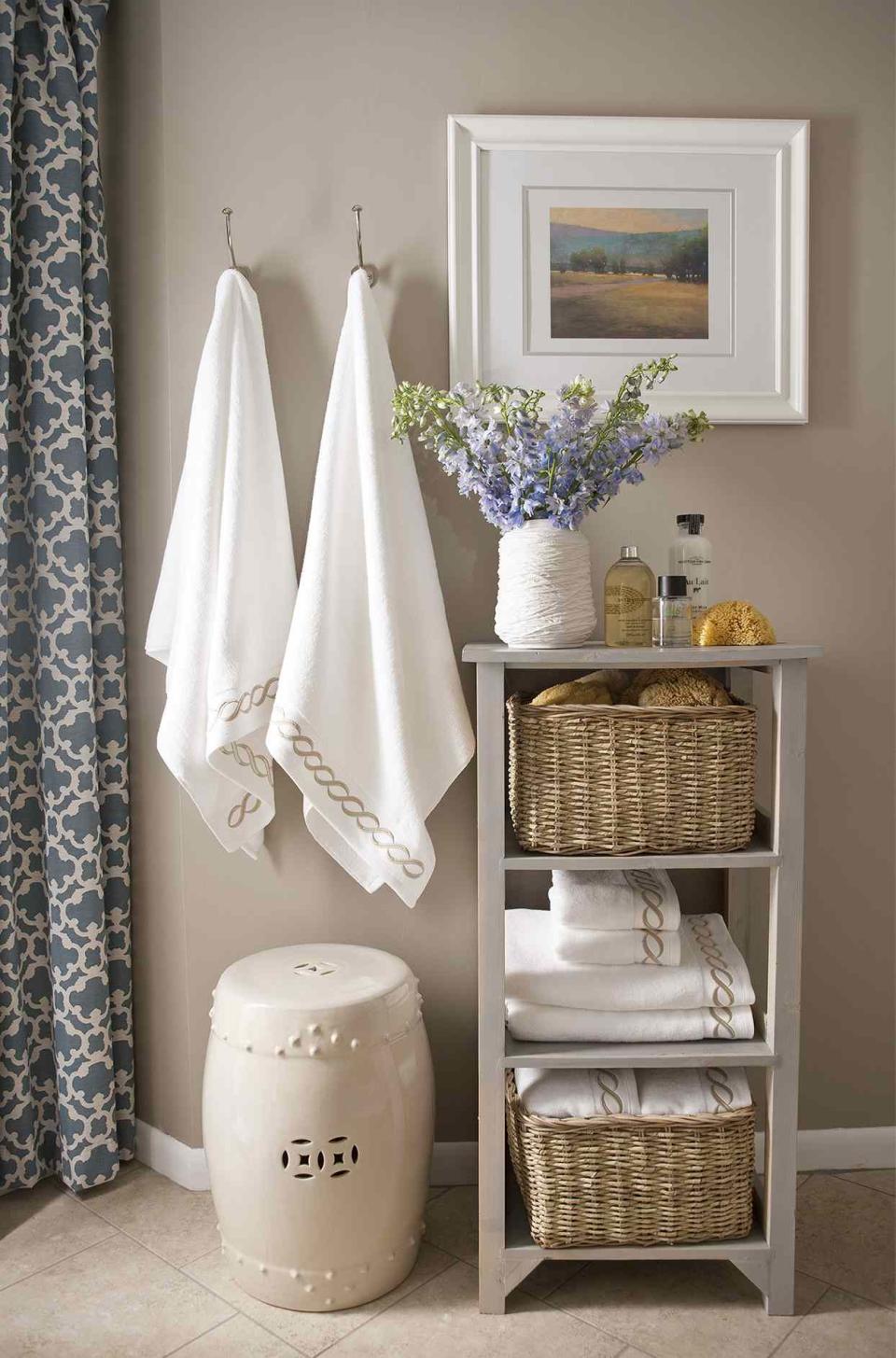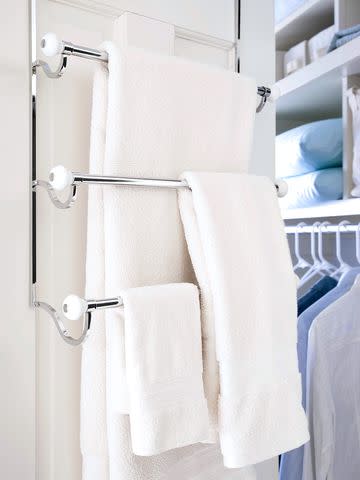Every Type of Bath Towel, Plus How to Choose the Right Ones
Our ultimate guide to bath towels includes fabric options, weight considerations, and care tips.

Better Homes & Gardens / John Bessler
When it comes to bath towels, you might be popping over to your local big-box store and buying the cheapest white option on the shelf. But perhaps we can convince you to hit pause and consider a few buying tips first. Towels come in a vast array of styles, fabrics, and weights to best serve you and your needs. Whether you’re after a supremely fluffy, absorbent option or need a lightweight, quick-drying version for your gym bag, there’s a towel out there for you. And once you find it, you'll never underestimate the power of a good one again.
For everything there is to know about towels, we tapped towel experts Amy Hoban, chief creative officer at Parachute, and Deanna Wu, vice president of merchandising at Brooklinen. Here, they share everything from towel weight to water retention to the laundry products you should avoid adding to your next towel load.
:
Common Towel Fabrics
Bamboo: Supremely soft, bamboo towels can be a more sustainable choice—but not always. If you’re opting for bamboo due to its sustainability (and not just its soft feel and absorption power), seek out towels made from bamboo linen or bamboo lyocell rather than bamboo rayon.
Modal: Modal is made from beechwood, a tree that requires less water to grow and therefore is often viewed as a more sustainable choice. It is also known to be more absorbent than cotton and maintains both its color and softness.
Polyester: Quick drying, but on the low end of the softness and absorbency spectrum, polyester isn’t the ideal choice for daily use. Opt for polyester if you need a towel to throw in your gym or tennis bag, otherwise, skip stocking your linen closet with polyester options.
Pima, Turkish, and Egyptian Cotton: These cotton varieties are more luxurious feeling than standard cotton thanks to longer fibers. However, they come with higher price tags to match. Each one is plush, absorbent, and soft. There will be slight differences in the feel of each variety, though all three should last longer and have more colorfastness than standard cotton with proper care.

Better Homes & Gardens / Helen Norman
Types of Towels
Washcloth: Washcloths are typically square and between 11”x11” and 13”x13". They're used for removing makeup and for use in the shower as a gentle exfoliator. For the ultimate hostess trick, stock a few black or navy washcloths in your guest bathroom to ensure visitors don’t have to worry about cosmetics ruining washcloths.
Hand Towel: Hand towels are typically placed on or near a bathroom vanity, either to the side of the sink or on a rack nearby. They’re larger than a washcloth, ranging from 15”x25” to 20”x30”, but are small enough to fit tidily onto most countertops when neatly folded.
Bath Towel: A bath towel is somewhere between 20”x40” and 30”x58.” It's used to dry off your hair and body after a shower or bath. Stack clean towels that have been folded in thirds on a shelf in your bathroom for easy access. Hang wet towels on a hook on the back of the door for quick drying after use. Avoid folding towels while they’re wet as this will increase their potential for mold and bacteria.
Bath Sheet: A bath sheet is larger than a bath towel, at around 40”x70,” but serves a similar purpose. Both are used to dry your body after bathing. Because of its large size, it’s not as easily used for wrapping up wet hair, though you can use it to gently press out excess water to avoid dripping.
Bath Mat: A bath mat is usually around 20”x30” and is used as an absorbent surface when stepping out of the shower or bath. It’s a thinner alternative to a bath rug, which means it often dries quicker too. To speed up the drying process, hang it on the side of the tub or over a towel bar when not in use.

Better Homes & Gardens / Emily Followill
Towel Weights
Towel weight is measured in GSM or grams per square meter. That means the fluffier, more absorbent, and heavier the towel, the higher its GSM. According to Parachute, most towels fall within the 300 to 900 GSM category, with kitchen and beach towels clocking in at the lowest end of the spectrum.
You might be thinking that 900 GSM will result in the most luxurious and high-quality towel, but that’s not necessarily the case. Parachute asserts that GSM has nothing to do with quality—it truly is strictly about weight. Heavier towels also take longer to dry, potentially leading to odor, mold, or mildew. Your best bet is to stick somewhere between 400 to 600 GSM for everyday bath towels. An ultralight towel is an option for those who live in humid environments or have a humid bathroom with less ventilation.
How to Care for Bath Towels
How you care for your towels is the number one factor in how long they’ll last. Hoban advises skipping the bleaching agents and fabric softeners, which she says will coat the towel’s natural fibers. Washing towels with items that have zippers or hook-and-loop fasteners is also a no-no as they can snag the fabric. Hoban and Wu both suggest washing towels after every third use. But, even between washes, pay attention to how you treat your towels. “You’ll get the best out of your towels between uses if you can let them air dry properly,” says Wu. “Hanging unfolded on a towel rack/bar versus a hook will help them dry faster and reduce any mustiness from developing.”
Buying a quality product will only take you so far in towel longevity; the rest is up to you. “If you are properly caring for and using a well-made, durable towel of high-quality materials, the towel can last up to two years and maybe longer,” says Wu. She advises looking for signs of decreased water absorption, tears, or rips for signs that it’s time to replace.
:
false

